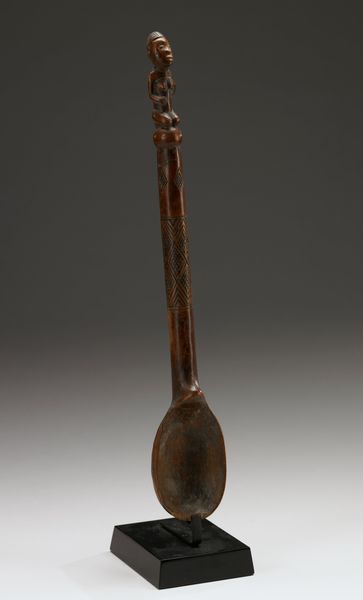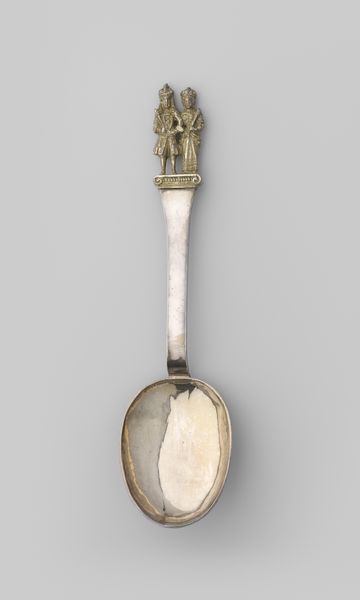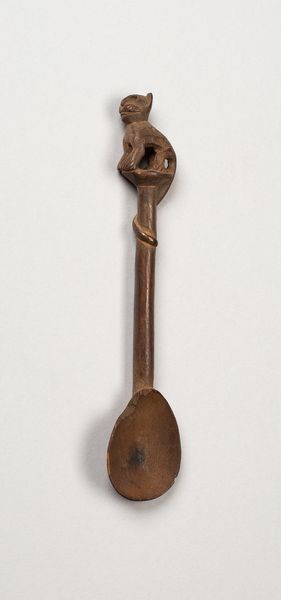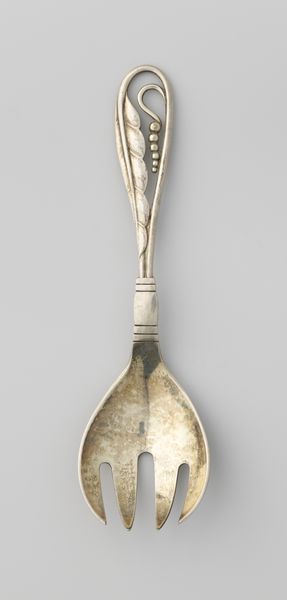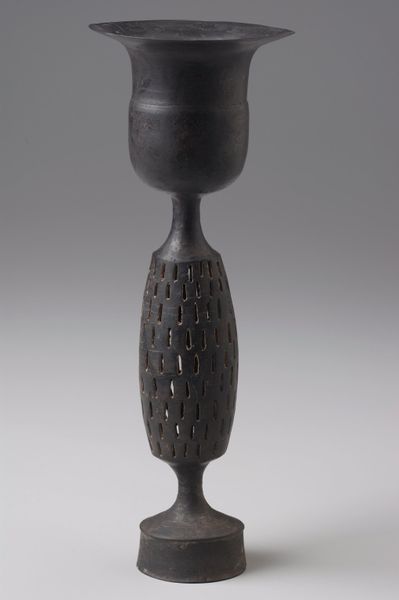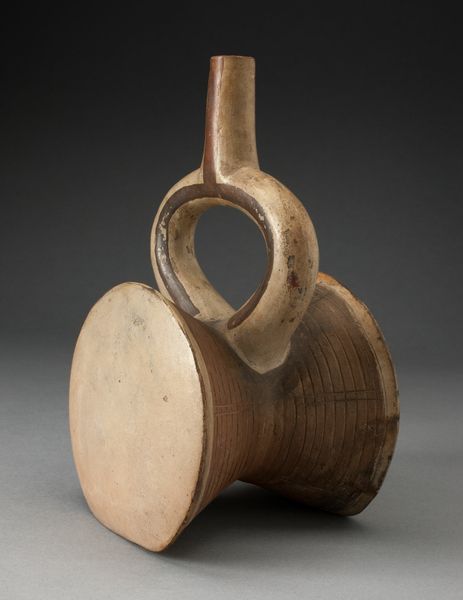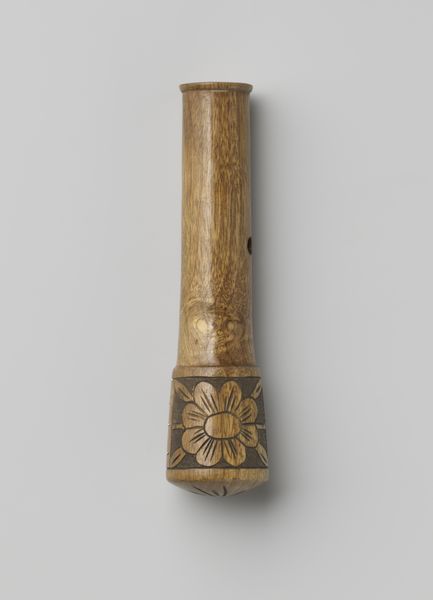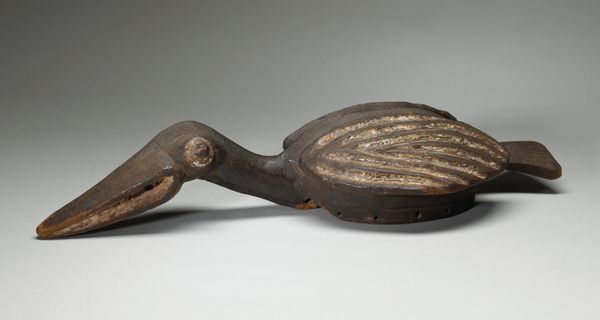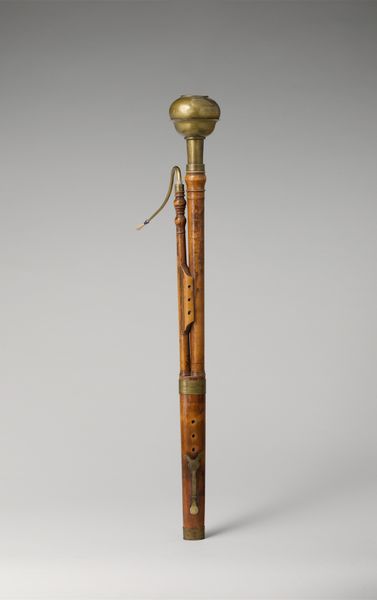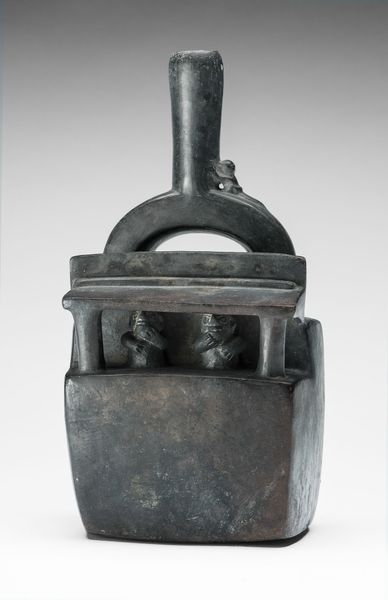
carving, sculpture, wood
#
african-art
#
carving
#
sculpture
#
figuration
#
sculpture
#
wood
#
statue
Dimensions: 15 3/4 × 4 1/8 × 2 in. (40.01 × 10.48 × 5.08 cm)
Copyright: Public Domain
Curator: Here we have a Kongo sculpture from around the 20th century, simply entitled "Spoon," currently held in the collection of the Minneapolis Institute of Art. Editor: It's captivating. It feels grounded and imbued with significance that transcends its functional form. It's more than just a spoon, isn't it? Curator: Indeed. While its purpose may have been utilitarian, objects like this often bear deep spiritual meaning. The figure carved at the handle—look closely at how carefully the face and posture were rendered—suggests a connection to ancestors or protective spirits. The bowl-like end itself carries themes of reception and sharing. Editor: That handle, in particular, grabs my attention. What kind of wood would have lent itself to that level of detail? How long would it have taken to achieve such smoothness? I imagine the artisan carefully selecting the right piece, working perhaps with a single tool to carve it from a solid block. Curator: Knowing Kongo traditions, it's very plausible that the type of wood chosen held symbolic importance. Some woods might be favored for their durability, others for perceived spiritual properties. And it isn't unusual to find each groove meticulously placed as if part of a visual language or coded symbolism we can only partly decode now. Editor: I agree, but for me the spoon itself speaks of ritual acts, communal gatherings, the value placed on shared sustenance. Was the spoon perhaps used by someone of high social standing? It feels special. Curator: Spoons of this quality were often linked to leaders or healers. It can even symbolize the ability to 'receive' knowledge or power. Editor: It prompts me to consider its continued utility and the long lifespan that an object like this might have experienced within a culture, witnessing generations come and go. Curator: A final lingering thought then. Even divorced from its original context, this “Spoon” retains echoes of lived experience. Its power lies in reminding us of objects as bridges, not merely things. Editor: For me, it all rests on the skill embedded in a single piece of wood that, even now, transcends form and evokes stories.
Comments
No comments
Be the first to comment and join the conversation on the ultimate creative platform.
